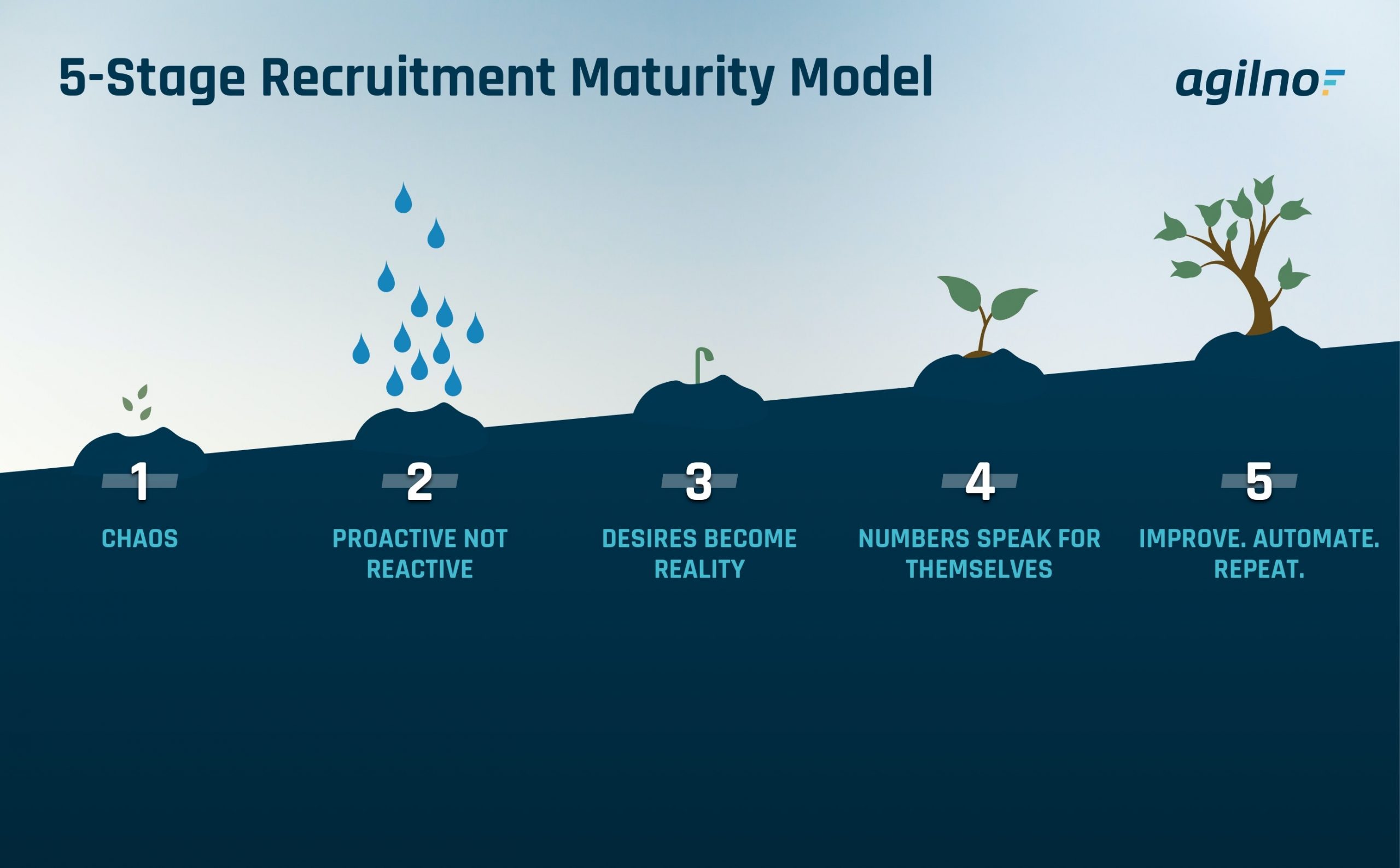What has the QA maturity model got to do with the recruitment process? My thoughts exactly, until one training day session… In Agilno, Q1 2022 was dedicated to internal training. We arranged a couple of training sessions on different topics – from Effective communication and Git workshops to QA processes.
The goal was for team members to learn something new, of course, but more importantly, focus on the bigger picture. Oftentimes we are concentrated on our tasks and projects, and in the meantime, we forget why we do what we do and where it has led us.
While I was listening to the QA training, I experienced the classic eureka moment. So, it came to my mind to support HR people in improving their recruitment process by identifying gaps in the current system. Everything is based on the QA maturity model.
But first, what is the QA maturity model? In short, the QA Maturity Model gives you a way to pinpoint areas for improvement, identify gaps in your current system, and provide recommendations on how you can close them.
Levels of the Recruitment Maturity Model
1. Chaos
Our recruitment process in this phase was mostly ad hoc, with the high risk of being overwhelmed by irrelevant applicants, and sometimes ending with hiring the wrong candidate.
Also, our recruitment strategy did not have a pre-developed plan, and our job ads usually did not target the candidates we wanted.
What did we learn? Chaotic processes lead to chaotic candidates. #Funfact (or perhaps not so much fun): Several years ago, we had a candidate who came to the online interview wearing no clothes! Yes, that really happened, and no, of course, he didn’t get the job! 🙂
How did we overcome the challenges? Endless hours of research, external education, and networking with people from the industry who helped us a lot in terms of structuring our processes. The point is that you need to read and listen enough to understand what you don’t know.
2. Proactive. Not Reactive.
So, after we realized how things need to be done, there was now a ‘tiny’ thing to do – just do it! But, as usual, what is successful in other businesses and industries doesn’t mean it will necessarily work for you. There was a lot of trial and error in the beginning.
Since we didn’t get what we wanted, we kept changing the process and began to strive for automatization and improvement. We found a tool that would help us with sorting applications. Also, we created different sets of questions for each position. Back then, the HR department had only one member – me. I would talk to the candidate, and at the same time take notes. And usually, I would often forget half of what they said.
At this stage, I was experimenting with who should attend the interview and whether we would first send tests, do interviews, do technical interviews, or try live coding tests. The whole procedure was still confusing.
3. Desires Become Reality
Finally, I got an addition to the HR department and thanks to her help, our processes improved and got the right flow. Our communication with candidates became more agile (pun intended). Also, we started using designed employment offers and the rejection emails were personalized with (hopefully) helpful feedback for each candidate.
Furthermore, we defined the order of hiring rounds, improved the use of our recruitment tools, divided the roles in the interviews, and started keeping detailed records during interviews to get a better insight into the candidate’s experience, personality, wishes, and expectations.
4. Numbers Speak for Themselves
The performance of the hiring process started being handled using statistical and other quantitative techniques and became quantitatively predictable. When we know how much time we need to hire a candidate for a given profile and how much budget we need to fill a certain position, right then we can plan the process.
We implemented KPIs, budgets, and statistics to align our job openings with the company’s mission, vision, and goals through clear and measurable metrics. With the help of our marketing team, we developed an employer branding strategy. We now have the ideal candidate persona and EVP (Employee Value Proposition) developed and explained. The marketing team knows whom to target with a different set of keywords, and in return, we reach talents that we have never reached before.
To put the whole story to the next level, we started using Project Management tools to plan each initiative and project, keeping detailed documentation of each step we take.
5. Improve. Automatize. Repeat.
To be frank with you, it is hard to say whether we have reached the fifth level or not. We are currently in the phase of automating the whole recruitment process (and other HR processes) through PM tools which will help us greatly.
Our goal is to bring all HR processes to the top quality for the sake of the employees we care about, but also because of our potential new employees. We are a people-first company, and we hope our new candidates will hear about it.
In the end, when you look at the phases we have been going through, you can see how the company has grown, which gives us great pride.
So, on which level is your company? Feel free to drop me a message.



